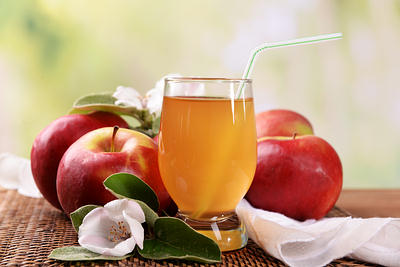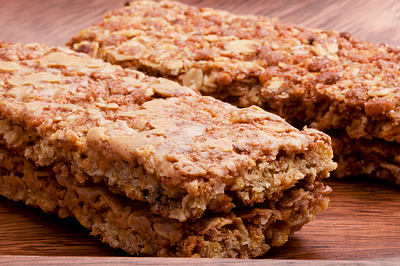Breakfast is the most important meal of the day for people of all ages, and what you choose to eat in the morning is equally important.
A healthy breakfast is linked to many benefits, including weight control, improved performance, good metabolism, better concentration and overall good health.
A 2006 study published in the Journal of Adolescent Health reports that the trend of skipping breakfast increases as adolescents grow older and is linked to increased weight gain.
Eating an unhealthy breakfast is as bad as skipping breakfast. So, plan your breakfast menu properly and pay attention to eating healthy always.
Here are the 10 worst breakfast foods to start your day.
1. Sugary Cereals

Cereals are considered ideal breakfast foods, but you need to choose the best ones. The market is flooded with sugary cereals, which are not healthy for your body.
These cereals taste good because they have added sugar and artificial flavors. When you eat these cereals, the body converts the extra sugar calories to fat, thus increasing the risk of obesity.
Furthermore, the sugar causes blood sugar levels to spike, making you hungry again and you start craving more unhealthy, sweet and fatty foods. Plus, the food dyes used in colored cereals are not healthy.
According to a recent analysis by the Environmental Working Group of 1,556 cereals on the U.S. market, many are as sweet as cookies and should not be considered a part of a healthy breakfast.
Choose your breakfast cereals carefully. Look for those made with whole grains, as the fiber will help you stay full longer.
Plus, the vitamins, antioxidants and minerals found in whole-grain cereals can protect against problems like obesity, digestive issues, cancers and heart disease.
2. Fruit Juice

Fruit juice is another staple breakfast item. The problem lies with processed fruit juices, which contain added sugars and preservatives.
Plus, processed fruit juices are often low in nutrient value, lacking healthy fiber, enzymes, minerals, antioxidants and vitamins.
In fact, to get the most health benefits from fruits, it is recommended to opt for whole fruits rather than fruit juice. Although the juice has as much sugar as the fruit, it does not contain fruit pulp which is rich in dietary fiber.
Unlike the juice which gets absorbed faster, the whole fruit with its fiber content that can help tame hunger pangs until lunch time.
A 2013 study published in the European Journal of Clinical Nutrition reports that intake of whole apples or clear apple juice has contrasting effects on health.
While whole apples are rich in polyphenols and pectin, these constituents segregate differently during processing into juice form, thus the clear juice lacks these constituents.
Pick whole fruits over fruit juice for a healthy breakfast menu. Whole fruit will provide your body with all the necessary vitamins, minerals and fiber.
Some tasty, low-calorie fruit choices for breakfast include apples, grapefruits, papayas, watermelons and berries.
3. Bacon

Make sure you are not eating something rich in saturated fat like bacon as part of your most important meal of the day.
Starting your day with bacon may increase your risk of heart disease and cancer due to its saturated fat, sodium, nitrate and nitrite content.
According to the American Heart Association, eating foods high in saturated fat raises blood cholesterol levels, which in turn may increase the risk of heart disease and strokes.
The World Health Organization says that high red meat intake increases the risk of colorectal, pancreatic and prostate cancers.
A 2005 study published in the Journal of the National Cancer Institute suggests an association between high intake of red meat and processed meat and an increased risk for pancreatic cancer.
Make sure to eat something nourishing and sustaining for breakfast to keep you energetic throughout the day.
4. Cereal Bars
Cereal bars, also known as breakfast bars, are often considered delicious and healthy breakfast options, but in reality some of them are a nutrition nightmare.
Most cereal bars are high in calories, sugar, unhealthy saturated fat and salt. Being loaded with added sugars, cereal bars are digested quickly and don’t satisfy hunger for long.
There also is a particular concern over the poor nutritional value in certain breakfast foods aimed at children.
A 2013 study done by the University of Hertfordshire reports that children’s ‘healthy’ foods, such as yogurts, cereal bars and ready-made meals, are higher in fat, sugar and salt than those marketed to the general population.
When it comes to breakfast bars, choose those containing whole grains that can give you the desired amount of energy-producing carbohydrates. Calcium-fortified cereal bars are also a good choice.
A 2015 study published in PLOS ONE emphasizes eating calcium-fortified cereal bars to significantly increase calcium intake, especially among women.
5. Doughnuts
Many people indulge regularly in doughnuts for breakfast, but doughnuts are one of the worst breakfast foods. These fried pastries are full of sugar, white flour and trans fat.
The high sugar content will raise your blood sugar level and can lead to significant weight gain over time. In fact, people with diabetes should avoid this sugary food as much as possible.
Doughnuts are made of white flour, a simple carbohydrate that contains close to no fiber. Fiber is essential for digestive health, and it helps lower cholesterol and control blood sugar levels.
Store-bought doughnuts are made up of about 35 to 40 percent trans fat. A 2015 study published in the BMJ reports that intake of trans unsaturated fat is associated with increased risk of cardiovascular disease, coronary heart disease, ischemic stroke and Type 2 diabetes.
Just like doughnuts, muffins and other pastries are also not a good choice for breakfast. Instead of these sugary items, even a glass of plain milk is a better way to start your day.
6. Instant Noodles
When you have a busy morning schedule and need something easy to cook and tasty to eat for breakfast, instant noodles is often the answer. But instant noodles are not at all good for your health.
The two main preservatives, butylated hydroxyanisole (BHA) and t-butylhydroquinone (TBHQ), used in instant noodles can have adverse effects on your health.
A 2005 study published in Drug Metabolism and Disposition notes that long-term constant exposure to TBHQ may prove carcinogenic.
Moreover, the wax used in instant noodles is not digested easily and takes at least 3 days to flush out of your system. These noodles are also filled with empty calories and too much sodium.
A 2014 study published in The Journal of Nutrition reports that high intake of instant noodles may increase a person’s risk for cardio metabolic syndrome, especially in women.
7. White Bread
White bread is one of the worst foods that you can have for breakfast. White bread has a high glycemic index (GI) as it is made from refined grains that are rapidly absorbed during digestion.
This causes sharp spikes in blood sugar and insulin levels. High GI foods increase your risk for weight gain, Type 2 diabetes and heart disease.
Also, white bread is low in fiber content, so you will usually feel hungry again before lunch time. These breads are also low in essential nutrients and may even have an adverse effect on your health. Plus, they are packed with yeast that can make you feel bloated.
Replacing white bread with a healthier alternative is easy to do. When buying bread, opt for those made with whole grains, such as whole wheat, whole oats or whole rye.
These breads may be a little more expensive than white bread, but they are worth the money in terms of being healthier for your body.
8. Pancakes
Typical pancakes are made with white flour, sugar, sodium and butter, thus making them unhealthy. It is recommended not to start your day with this sweet, calorie-rich food.
Being low in fiber, pancakes are less filling, thus making you hungry more quickly. They also do not contain any protein that keeps you feeling full.
Plus, the sugar and syrup used in pancakes can rapidly increase your blood sugar and harmful triglyceride levels that raise your risk of heart disease.
Even the butter used in pancakes is not good for your heart. Butter is high in saturated fat, and when eaten in excess can boost blood cholesterol levels.
But you don’t have to give up the fun of a pancake breakfast. Just make them using healthy ingredients.
Make the batter with whole grains and add mashed, grated or chopped nuts, fruits or vegetables to add a punch to the taste as well as nutritional value.
9. Flavored Yogurt
Flavored yogurt is another popular and convenient breakfast item that is not healthy due to the presence of artificial colors and flavors. Plus, it contains lots of added sugar and syrup.
Flavored yogurt is low in nutrient value as compared to plain yogurt. It is low in potassium, protein, calcium and vitamin D.
Plus, the mouth-watering flavors actually don’t come from the real fruit, but rather the pureed form that is high in sugar content, which provides instant energy but no nutrition. The sugar also increases your calorie intake, thus making you gain weight.
Instead of flavored yogurt, opt for plain yogurt for breakfast. Plain yogurt is a good source of calcium, protein and gut-healthy probiotics.
You can make your plain yogurt tastier by adding chopped fruits and nuts, such as apples, pomegranates, berries, almonds and walnuts. These add-ons will promote slower digestion and increased satiety.
10. Coffee
For many, a cup of coffee is a delicious way to boost their mood and brain function in the morning. But coffee is something that you should avoid including in your breakfast menu.
A 1999 study published in Physiology & Behavior reports that when coffee and breakfast cereal is compared, caffeine increased blood pressure and pulse rate, whereas breakfast cereal only had an effect on pulse.
Plus, many add-ons like non-dairy creamers or sugar in a cup of coffee can add excessive carbohydrates or sugar in your body. This in turn is not good for your weight as well as heart health.
Instead of coffee, start your day with a cup of green tea, which is good for your overall health.








